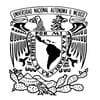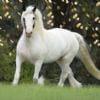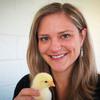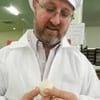Explore all the information on
Poultry management
Poultry management usually refers to the husbandry practices or production techniques that help to maximize the efficiency of production. Sound management practices are very essential to optimize production. Scientific poultry management aims at maximizing returns with minimum investment. A carefully controlled environment that avoids crowding, chilling, overheating, or frightening is almost universal in poultry farming. Cannibalism, which expresses itself as toe picking, feather picking, and tail picking, is controlled by debeaking at one day of age and by other management practices. The feeding, watering, egg gathering, and cleaning operations are highly mechanized. Birds are usually housed in wire cages with two or three animals per cage, depending on the species and breed, and three or four tiers of cages superposed to save space. Cages for egg-laying birds have been found to increase production, lower mortality, reduce cannibalism, lower feeding requirements, reduce diseases and parasites, improve culling, and reduce both space and labour requirements.
Royal Agrifirm Group has chosen Porphyrio® software as integration partner for its PoultryNEXT platform.
Royal Agrifirm Group (RAG) – whose motto is “Better...
Comments : 0
Recommendations: 0
INTRODUCTION In recent years, interest in the welfare of hens has been increasing. The public and activist groups than by scientific evidence have influenced much of current European legislation on the welfare of laying hens more. These groups proposed that the European Union abolish the cage housing system by the enriched cage system (750 cm 2 of surface per bird); where the hens also have perches and nesting material (Bulmer y Gil, 2008). In this regard, in the...
Comments : 0
Recommendations: 0
Figure 1. Evaporative cooling system with plastic pads. Little has changed when it comes to poultry house evaporative cooling pads over the last 30 years. Yes, there have been some relatively minor changes in things such as...
Comments : 20
Recommendations: 0


Bacillus licheniformis-Fermented Products Improve Growth Performance and Intestinal Gut Morphology in Broilers under Clostridium perfringens Challenges (Extract)
Suggested link
Middle East has experienced an excessive temperature this summer and this affected the poultry industry and caused giant losses in farms and hen houses. In our region, as a general rule, the area fro rearing is 10 birds/m2 for broilers, 8 birds/m2, and 5 birds/m2 for broiler breeders. The natural summer temperature in our country is 29-33°C. We can control it with ventilation and cooling but this case is out of control. The results were: In Broilers:...
Comments : 20
Recommendations: 0
Introduction Controlling production costs and animal welfare are important factors for breeders. Feed accounts for 50 to 70% of the production cost in poultry production (van Horne, 2018). The feed conversion ratio (FCR), which is the ratio of feed consumption to meat or egg production, is an important criterion for the profitability of these farms. It is also an indicator of the environmental impact of production. For example, the reduction of 10% in FCR results in a reduction...
Comments : 5
Recommendations: 2
This award recognizes original research on poultry welfare in any discipline that has been published in the last five years (2017-2021).
Alexandra Harlander
University of...
Comments : 1
Recommendations: 1
This award is given to recognize the outstanding record of turkey research published in the last six years (2016-2021).
Marisa Erasmus
Purdue University
Marisa Erasmus is...
Comments : 0
Recommendations: 0
INTRODUCTION Broilers and turkeys are traditionally kept under monotonous environmental conditions, which compromise bird welfare due to inactivity, restriction of the behavioural repertoire and various health hazards. Recent development of welfare labels request enrichment devices in order to stimulate the expression of a wide spectrum of behaviours and to improve the physical and psychic conditions of the birds. Consequently there has been a rapid development of studies...
Comments : 0
Recommendations: 0
In 2020, the poultry industry had a combined value of over $35.5 billion in the United States. Of that, $21.7 billion came from broiler chicken production (USDA-NASS, 2021). Over 9.22 billion broiler chickens were raised and brought to market though the year, making it the largest and most valuable sector of U.S. poultry production. With such...
Comments : 0
Recommendations: 0


Bacillus subtilis DSM 32315 alters immunity, nutrient transporters and cecal microbiome of broiler chickens under necrotic enteritis challenge
Suggested link
Sickness behavior is an animal’s adaptive response to disease which aids in their recovery. When an animal is infected by a pathogen, an immune response involving immune cell and immune molecule activity is stimulated and sickness behavior results. Sick chickens are difficult to identify because they rarely show signs of illness before it...
Comments : 0
Recommendations: 1
For a long time antibiotics have been used in poultry and egg production but there is considerable consumer/regulatory pressure, price pressure and technical reasons why the administration of antibiotics on a routine basis needs to be phased out of these production systems. The development of resistance in target and non-target organisms is just one reason. For exporting companies we may see trade barriers erected to products that have been produced with antibiotics to prevent spread...
Comments : 1
Recommendations: 1
I. INTRODUCTION Heat stress is considered one of the important factors affecting the profitability of the poultry industry in hot climates. Significant economic losses occur due to high mortality, impaired feed efficiency and poorer growth rates (Lara and Rostagno, 2013). Periods of high temperature prior to transport and processing can further compound these adverse effects. One of the physiological consequences of heat stress in broilers is disruption of acid base...
Comments : 0
Recommendations: 0
The Poultry Extension Collaborative (PEC) brings you the webinar "Bugs, Biome and Breeding: Improving Laying Hen Welfare" on May 17th, from 9 to 12 am EST, via Zoom.
Attendance is free and you can register ...
Comments : 0
Recommendations: 0
Introduction Recommendations for lighting programs during the rearing period for broilers generally include a dark period. In Canada, the Codes of Practice for Chickens, Turkeys and Breeders (https://www.nfacc.ca/pdfs/codes/poultry_code_EN.pdf) require that a minimum of 4 hours of continuous dark is included in a photoperiod program from day 5 of placement to no sooner than 7 days prior to catching. However, this remains a controversial subject, and the inclusion of darkness is...
Comments : 0
Recommendations: 0
Introduction Most of the population in the tropics depend on poultry as their significant source of protein supply. The harsh climate conditions in this region are making it harder to have optimal performance in poultry production. This results in a lesser everyday supply of...
Comments : 0
Recommendations: 1
Flies population increasing largely inside the broiler house and making birds uncomfortable. Is there any solution without harming birds health? ...
Comments : 1
Recommendations: 0
Bird performs well within a certain range of environmental temperatures. As the temperature gets higher than the range, the bird falls on stress generally called heat stress. Heat stress is the most significant stressors influencing poultry productivity and causing considerable economic losses in the poultry industry. This induces several negative effects on physiological response of bird. Reducing feed consumption, body weight gain, feed efficiency, egg production and immune response are of...
Comments : 1
Recommendations: 7
INTRODUCTION Although rearing the meat poultry in cage systems has recently attracted a lot of attention, however, some of the meat poultry stocks particularly broiler chicken still grow up on the floor of the poultry houses with a substrate known as litter material as poultry bedding. The recent trend in poultry industry has increased the demand for litter materials. Litter serves a number of important functions, such as absorbing moisture of excreta, reducing contact between...
Comments : 0
Recommendations: 0
1. Introduction Available energy in feed or feed ingredients for poultry can be measured by different systems, with the apparent metabolizable energy (AME) [1], despite its limitations [2,3], being the commonly accepted and extensively used system. Three methods, namely, direct, substitution (or difference), and regression, have been used to determine the AME of ingredients for poultry. In each method, the excreta can be collected by total collection, which is the...
Comments : 0
Recommendations: 0


.jpg&w=3840&q=75)





.mp4&w=3840&q=75)






.jpg&w=3840&q=75)
















